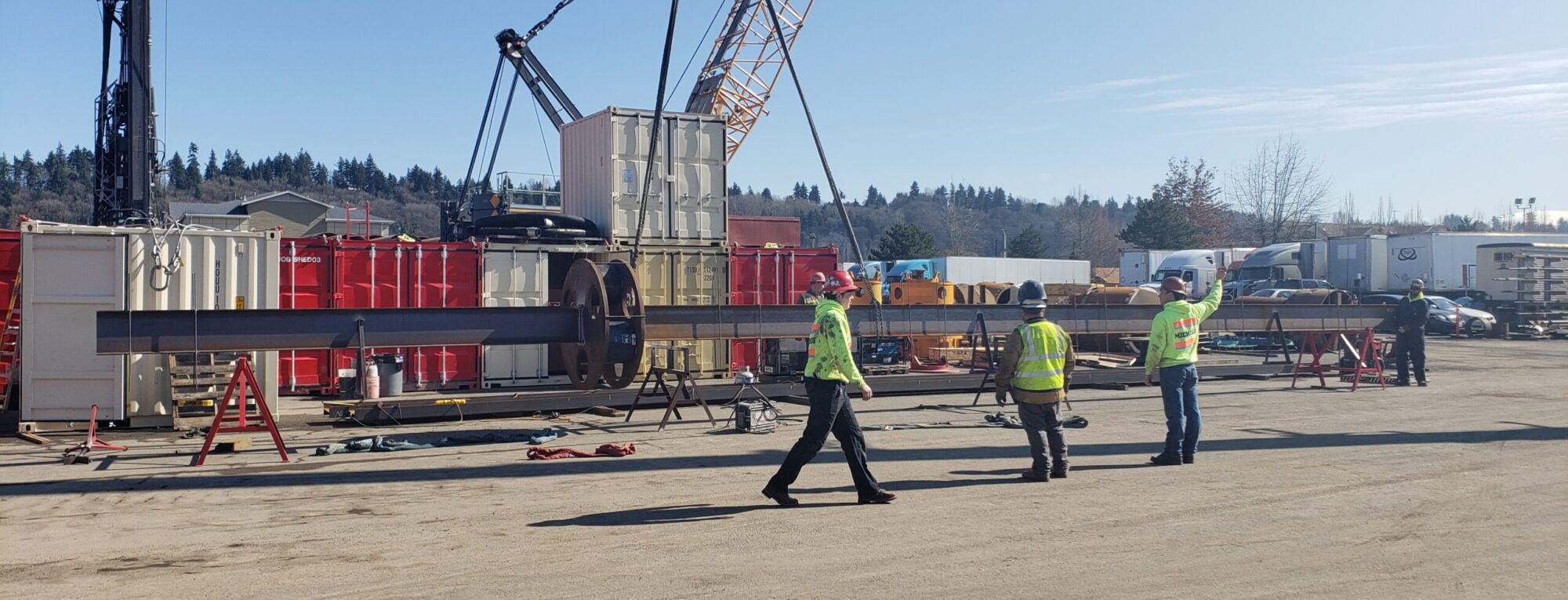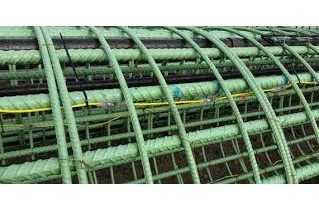Have you ever seen an innovation that is so clever yet simple that you think to yourself “Wow, why didn’t I think of that”? That’s how we feel about the Thermal Integrity Profiler (TIP for short), developed by Dr. Grey Mullins of USF and our friends at Pile Dynamics, Inc. The basic assumption of TIP testing is that heat of hydration of concrete in a cylindrical shaft will produce a roughly bell-shaped thermal profile. By monitoring temperatures using thermistors attached to the rebar cage at one-foot vertical spacing for the duration of the initial hydration reaction and plotting the results, correlations to the shape (diameter of the shaft as well as the rebar cage alignment within it) can be assessed. Because of its ease of deployment, reliability and ability to “see” both inside and outside of the rebar cage, TIP is fast becoming the preferred alternative to traditional Cross-hole Sonic Logging (CSL) for drilled shaft quality assurance.
When installing a fully TIP-instrumented test shaft, it’s vital to monitor all aspects of the construction process, from the initial cage pick all the way through to the end of concreting and casing extraction. An anomalous load test result makes more sense if it can be correlated to bulge in the shaft, for example. For years, one of our favorite on-site tricks has been to monitor the embedded thermistors on vibrating wire strain gages at various elevations of the rebar cage during the concreting process. The rise in concrete is tracked by the spike in temperature at each progressive elevation of instruments, and serves as a backup to the traditional “weighted tape” method which can be subjective, especially below an embedded bi-directional jack assembly. However, we did not make the leap from the passive collection of this data to the “a-ha” moment of using it for actual analysis of the alignment of the cage and shape of the shaft. So, hats off to you, Dr. Mullins and PDI!


